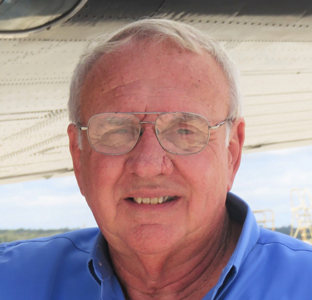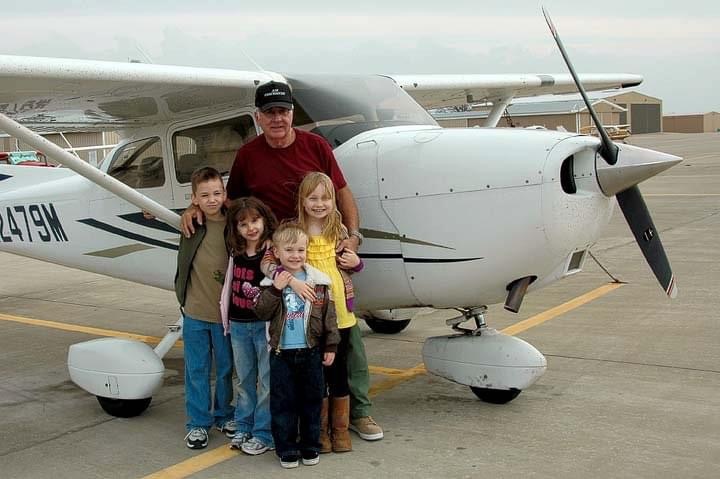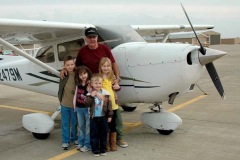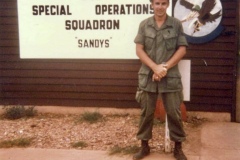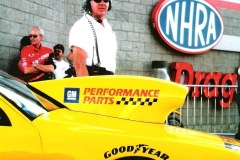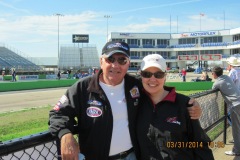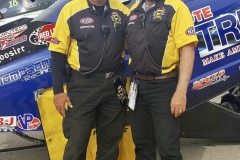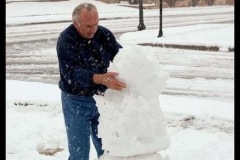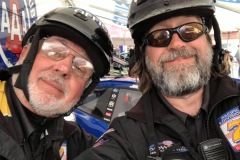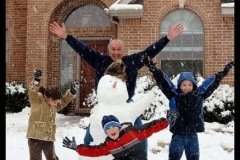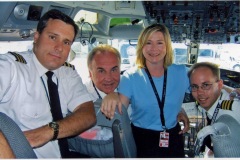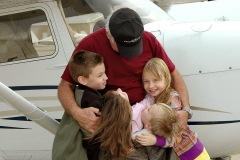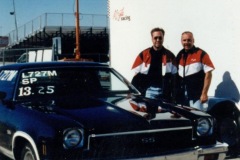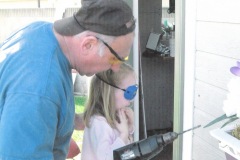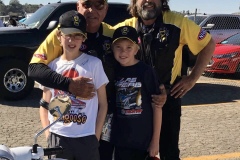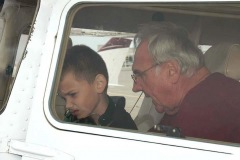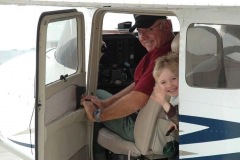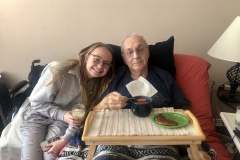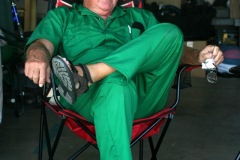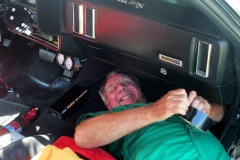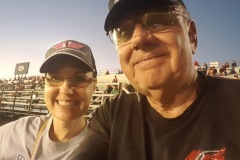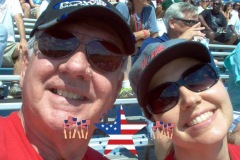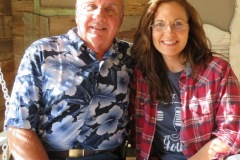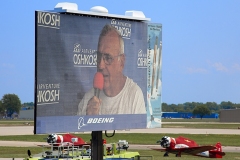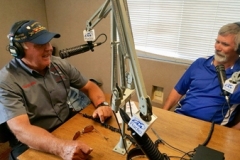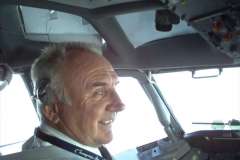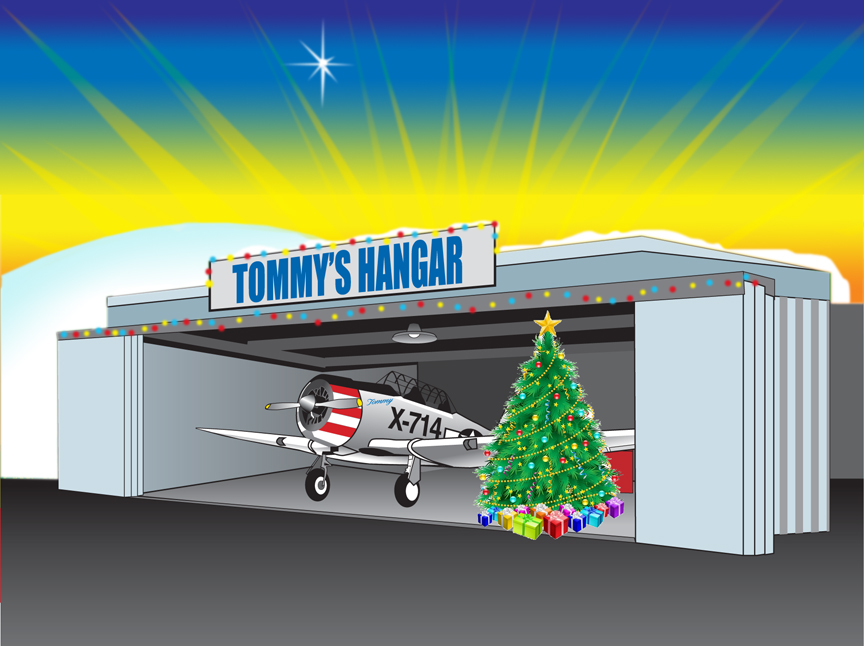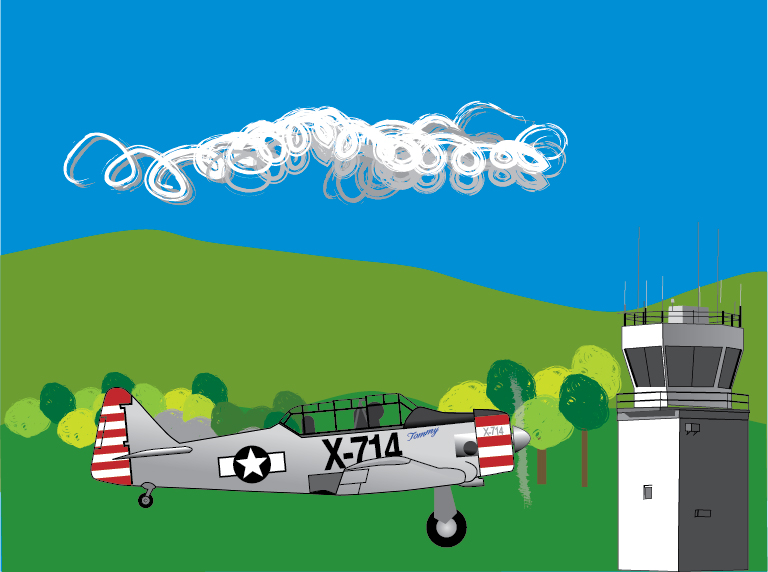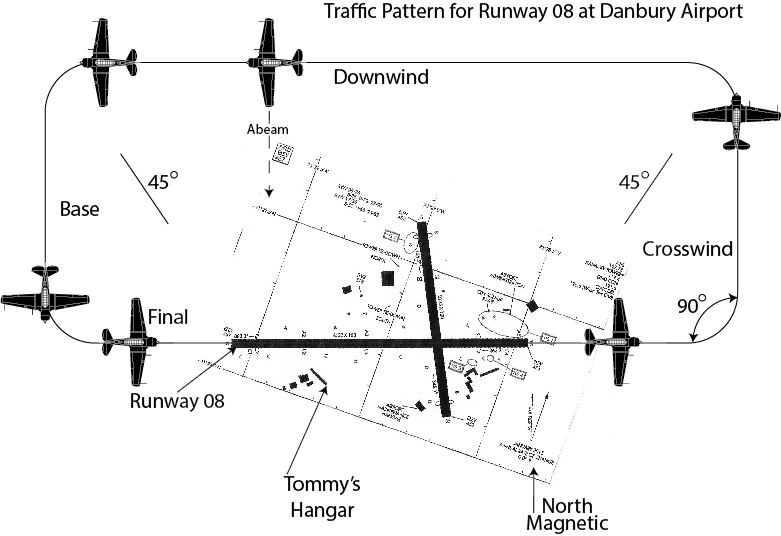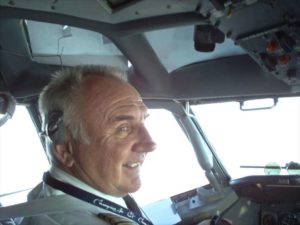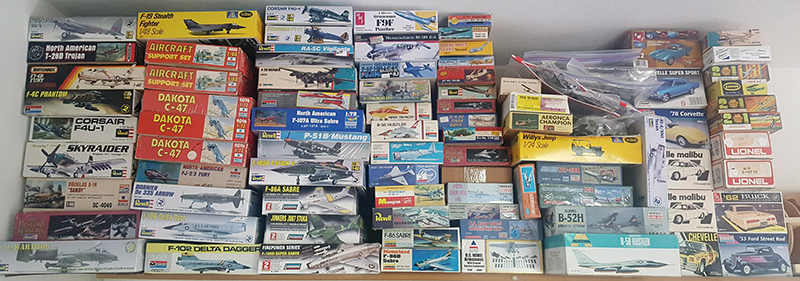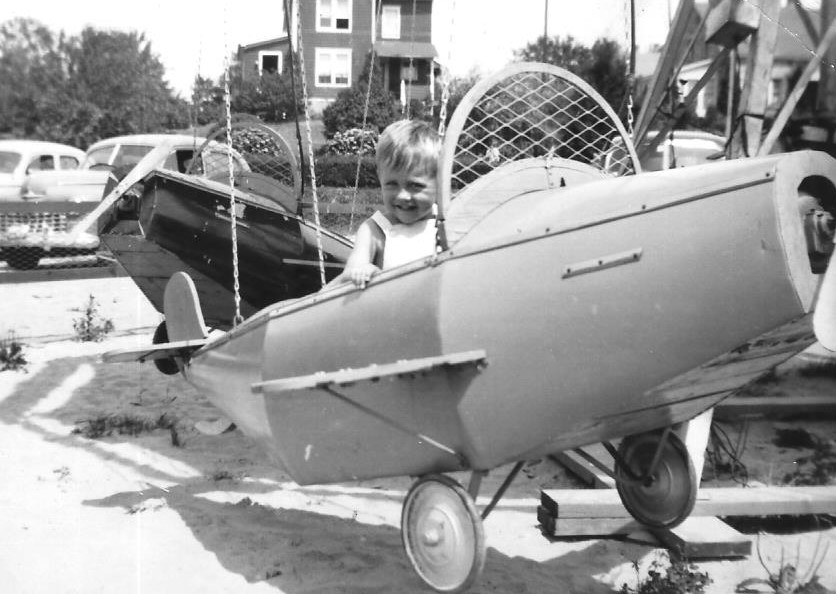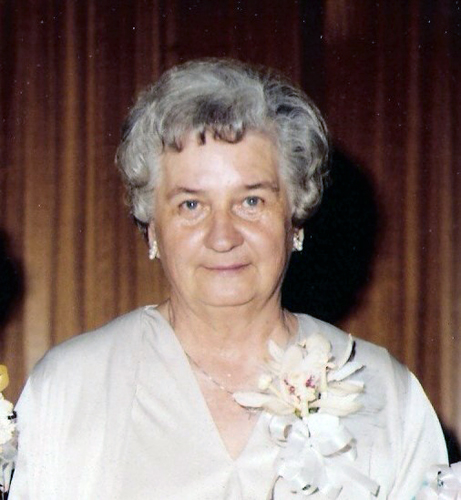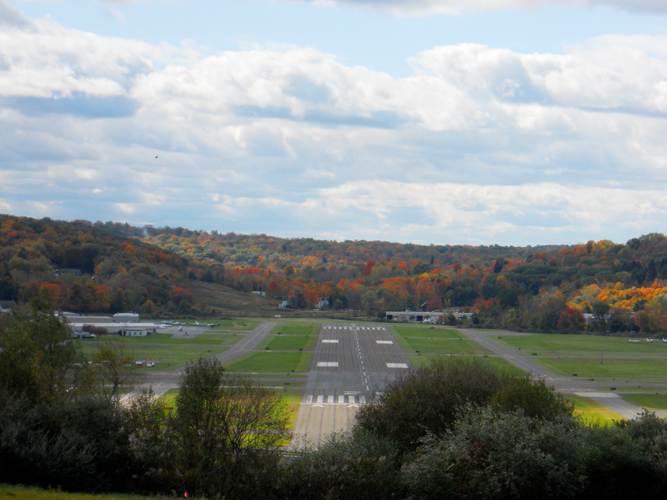No sooner than the light over Tommy’s canopy had clicked off that morning, the small door opened and in walked Captain Billy and Bobby Z. It was turning out to be a pleasant day here in Tommy’s hangar, Tommy thought to himself. Captain Billy and Bobby Z had stopped by for no particular reason, and had decided to do a quick cleaning, sorting and sweeping of the hangar.
They were just finishing up. The smell of fresh coffee and warm cake donuts filled the hangar. The seashell chairs were placed just ahead of Tommy’s left wing. Two for Billy and Bobby Z, and two more for the inevitable guests that would most likely arrive. The sun was shining in through the big hangar doors on this warm summer morning. One thing led to another, as “hangar flying” does, and Bobby Z asked Billy how he got started in flying.
Tommy listened as Captain Billy sat back in his blue chair and began to recall, “It’s a long story my brother” started Billy, “As a matter of fact, it started right behind us here at that old hangar.” He went on to say how, as a 14-year-old, he had come here with a classmate on their bikes, back when the airport looked a lot different in some areas than it did today.
Billy continued to describe about how they had started by sweeping out that big hangar. The hangar was from back before World War II. It was a rectangular building built out of cinder block walls about 4 feet high. The walls were topped with steel-framed frosted glass with some sort of wire imbedded in it. It let the light in without being totally see through. There were 4 big doors on rails that, when open, slid along the inside wall. They, too, had the frosted glass windows. The roof was made of wood trusses and was curved at the top. On the front, at the top were the words “Danbury School of Aeronautics” painted in red on the white corrugated metal. Hanging off the front was a large lighted “TEXACO” sign.
Billy reminisced, “This is where I took my first lesson, in a faded yellow and red Aeronca Champion. A steel tube, wood and fabric two-seat trainer from the 1940s. You sat in tandem, one in front of the other. No electrical system, and you started it by hand-propping the 65 horsepower, 4-cylinder engine. My dad had surprised me by working out a deal with a friend of his, Ed, who was a local fireman and an aviation instructor. Ed was a tall man who, when seated in the front, blocked the view from the back seat.” Billy shared memories of having to fly looking out the side and watching the position of the wing tips in relation to the horizon. If they were parallel and equal distance, he was level. If one was higher than the other, he was turning. If the angle changed, he was either climbing or descending. “It was a challenge for a young aviator,” he added.
Tommy listened as Billy explained how he and his friend Joey spent every day that summer working there, washing and fueling airplanes. They even got to taxi one occasionally, when the student left the airplane at the fuel island after a lesson. Back then, the fuel tank and fuel island were right next to the hangar. They even taught Billy and Joey how to hand-prop the Aeronca. All this at 14, going on 15 in September. You could never do those things today with the regulations, laws and insurance. “We were told to stop by the manager just before the end of summer due to the changes,” Billy explained, “but we were still ‘Ramp Rats’.”
It was a summer that Billy said he would never forget. “I learned a lot about aviation, and I remember the “hangar flying” the adults did while sitting along the open hangar door in the red and white Seashell chairs. In fact,” he went on, “that’s why there are seashell chairs at Tommy’s hangar, and why that specific type of light is over Tommy’s canopy.” It reminded Billy of the lights in the old big hangar.
Billy explained that the very row of hangars that Tommy lives in was there when he worked here as a youth. Tommy’s hangar area was part of a competing aviation school, sales and charter company called Tiburzi Airways. The daughter of the owner went on to fly for the airlines.
As Billy pointed out toward the airport, he mentioned how back then, the airport had no control tower, just a UNICOM frequency of 122.8 and that the radios were in the FBOs (Fixed Base Operators). There were only a couple of FBOs. There was Danbury School of Aeronautics, the Piper Aircraft Dealer, Tiburzi Airways, The Cessna Aircraft Dealer, and later came Connecticut Air Service and Bluebird Aviation. At the other end was the Beechcraft dealer, Sadler’s Aircraft, and a small avionics shop. The BIG hangar on the northeast corner was the old Doman Helicopter Company hangar.
He explained how there were limited taxiways back then. You back taxied on the runway or, in the taildraggers, the grass along the side of the runway. “In the Aeronca’s we landed and sometimes took off in the grass areas. It saved the tires and brakes,” Billy explained.
Captain Billy went on to tell Bobby Z about one of his first adventures. He was cleaning the windshield on a red and white Piper Tri-Pacer when the pilot came out to pre-flight. As they chatted, the pilot asked Billy if he wanted to go for a ride up to Albany, New York and back. Now, that was a silly question. Billy ran off to ask his boss for the day if he could go, and of course Billy, his boss, said yes. It would be his first flight out of the Danbury area. His first “cross country!” Now, these were the days before cell phones, texting and even answering machines, so Billy tried to call home but there was no answer. The pilot assured him that they would be back before 4 pm, so he would get back before his dad picked him up at 5. So, off they went, flying West, then following the Hudson River up to Albany so the pilot could pick up a part. Well, lunch was involved, as well as a delay getting the part. This was Captain Billy’s first experience with the punctuality of aviation. To this day he can be heard quoting a friend’s saying, “Time to spare, Go by Air.” Things always seem to be on a delay.
Anyway, it was a good day. He learned how to navigate with the NARCO “Super Homer” by tracking the Albany and Wilton Radio beams by following a small needle on the Navigation Radio. But he was late. “Did I mention that I had never met the pilot before? Anyway, I digress,” Billy added. When he got back, there were his mom and dad. They were frantic, at least mom was, that they had arrived and when they asked where Billy was, his boss calmly said that he had flown to Albany and should be back any minute.
Well, the ride home was far from quiet. He sat in the back of the car as mom went on and on about the dangers and responsibility and, and, and… See, his mom hated the thought of him flying, always did, and that was a huge obstacle to his perusing an aviation career. It never happened again. He turned down many chances to fly after that.
But, there was that day, as he put it, “the day I almost got killed.” He had gone up for a short flight over the lake with a gentleman he knew. It was an hour flight, so he just went. They went up in a Piper Colt and were coming back from the flight. As they were entering the pattern, in a right hand turn to enter downwind, and as the left wing on the Colt lifted for the turn, there, filling the small side window was a white Cessna 195, coming from their left and down into the pattern.
“He never saw us. We banked hard right and after a few words over the Unicom, reentered the pattern. After landing, the pilot drove down to Sadler’s to have a discussion.”
“We had entered the pattern correctly,” Billy stated, “the Cessna had cut a corner. I almost wound up a stain on the hill on the downwind leg to runway 26.”
“One last memory,” Billy added, “and one you may or may not believe. I was working one Saturday and was summoned to the office. I was given some plastic polish, some new clean towels, and was tasked to go and clean all the windows on Aeronca Champ N31677. A 65-horsepower model. I was told to do a real good job because Charles Lindbergh was going to take his granddaughter flying to see ‘the fair from the air.’ It was fair season, fall in Connecticut. I hesitated and thought maybe I was being suckered, you know, like the bucket of ‘Prop Wash,’ or the ‘left-handed crescent wrench.’ I was assured that I was not, even though I was still not sure. But I got to go out, sit in the Champ and clean windows, and watch airplanes as they gave rides for the Great Danbury State Fair that was in operation just off the approach end of runway 17.”
“Well, as I was just about finished a very large, very black Chrysler Limo pulled up, and who should step out but Charles A. Lindbergh and a young girl. Stan had gone out to meet him and escorted him out to 677, as I untied the aircraft. After he had seated his granddaughter, he got in, and with one swing of the propeller from Stan, the engine purred like I had never heard it before. With a thumbs up, he then taxied out in one smooth fluid motion. Then we all watched as ‘The Lone Eagle’ took to the skies over Danbury Airport and The Danbury Fair. We watched him land in the grass, taxi in and be escorted to his car. I had gotten to clean the windows on a plane flown by Charles A. Lindbergh.”
“There are a lot of memories here at the old flying field, Bobby Z,” he went on. “Before my 4 years of military service from 1966-70, I took some lessons in a Piper Colt from Danbury School of Aeronautics. After my return, I used the GI bill to secure my ratings both at Connecticut Air Service, which occupied the big hangar that was on the northeast corner. It has since burned down. I finished up at Danbury Airways, the old Danbury School location behind us, where I worked as an instructor and Cessna Citation ground instructor.”
He explained how he went on to work teaching the MD-80 for the McDonnell Douglas Company in Long Beach California, where he and Bobby Z had met, and then on to fly for 16 plus years for the airlines on Douglas DC-8s and as Captain on the Boeing 727.
“So, now you see the path I took to get where I am today. Back in the same airport, the same old T Hangars where it all started so many years ago. Looking at the same hills that surround what is Danbury Airport.”
With that, Captain Billy took a sip of his coffee, a bite of old-fashioned donut, and with a wink to Tommy, gazed off into the blue sky to the East of Tommy’s Hangar. Then, as he eased back in his blue seashell chair, he became, “The Airport Kid” once more. It had been a good day.
